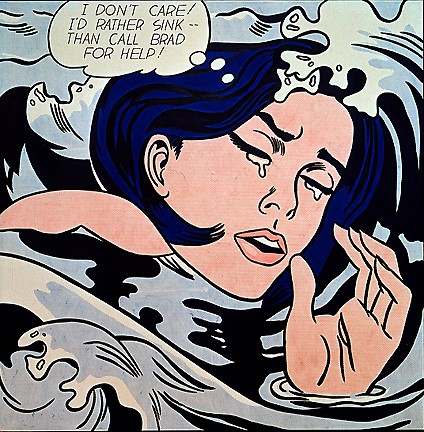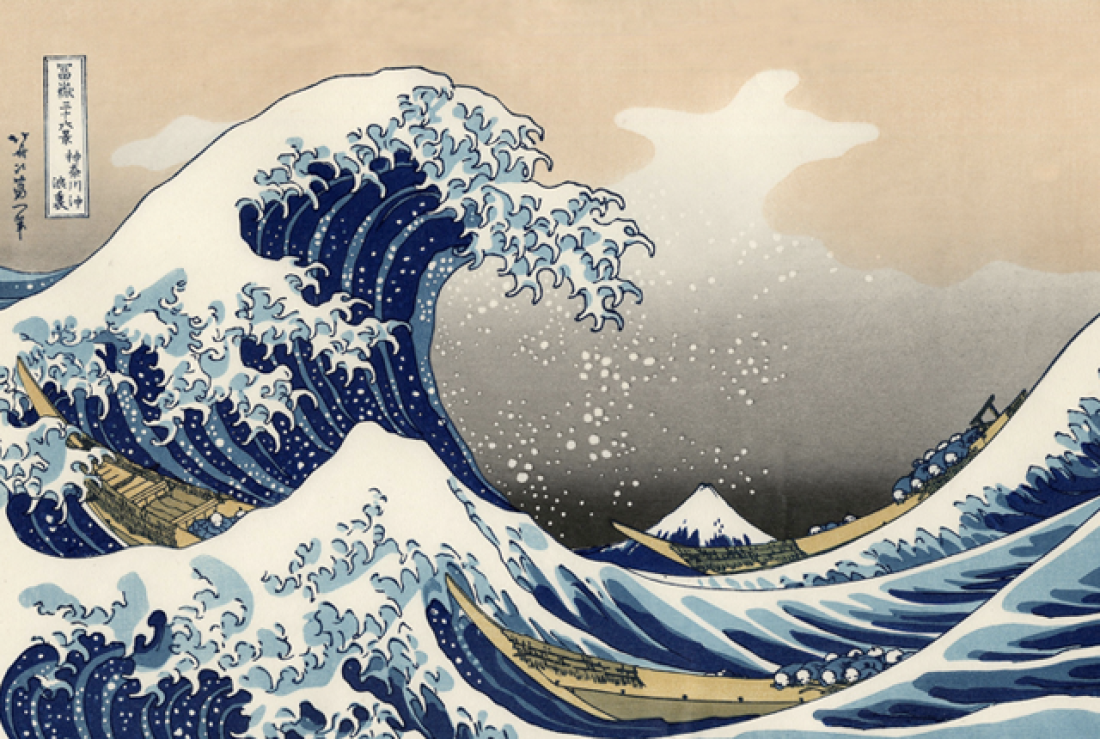Campbell’s Soup Cans and the Romance Novel
Campbell Soup Cans: The Background
Campbell’s Soup Cans: painted by Andy Warhol in 1962 . The work is now displayed in the Museum of Modern Art in New York City. Here’s a selection:

You might have also seen Roy Lichtenstein’s Drowning Girl. He painted it in 1963. MoMA’s acquired it in 1971. Like Warhol’s Campbell’s Soup Cans, Drowning Girl is considered a masterpiece. If it weren’t, it wouldn’t be hanging in a prestigious museum.

Lichtenstein became famous for magnifying and reproducing by hand the mechanized Ben-Day dot technique. It creates comic book coloring and shading. He brought the techniques of mass-produced art to the canvas. Just as Warhol turned mass-produced soup cans into works of art by hand-painting and hand-screening images of them.
Campbell Soup Cans: The Question
As a romance writer, I have a question. How did Warhol and Lichtenstein make it into the ranks of great artists?
The answer is: Henry Geldzahler. He was the Curator for American Art at the Metropolitan Museum of Art. He associated with all the heavies of the contemporary art scene at the time and was a friend of Warhol. From his position of power and prestige, he made the argument for Pop Art.
Lichtenstein’s work sometimes gets kudos for referencing Japanese artist Kitsushika Hokusai’s Great Wave off Kanagawa of 1831-33, especially the treatment of the swirling water.

I clearly see the graphic – cartoonish – quality of Hokusai’s work. I have no difficulty imagining how it inspired painters such as French Impressionist Claude Monet and later illustrators of manga, Japanese comic books. But I do not see a direct influence on Lichtenstein.
The real question is: Why is Lichtenstein seen in comparison to Hokusai? Could it be that Lichtenstein needs another kind of justification outside of American comic books, specifically romance comic books?
Romance comic books are the immediate and obvious inspiration for Drowning Girl, specifically this image by Tony Abruzzo from a 1962 DC Comics:

Abruzzo’s work does not hang in MoMA. Geldzahler died in 1994, and another 20+ years have elapsed since then. The museum now has to justify why Lichtenstein’s appropriation, which seems not to have been problematic in 1963, still works as great art in 2015. Not an easy trick, and not my job.
Campbell Soup Cans: My Job
Rather, my job is to understand the romance novel. For the past year I’ve been examining the whys and wherefores of the denigration of this genre as an art form. I thought I’d met and countered all the reasons by now. But the story of Lichtenstein’s Drowning Girl has opened my eyes wider.
Lichtenstein admired Abruzzo’s work, coveted it in a way. Otherwise he wouldn’t have appropriated it. It’s visible. And it’s that simple.
A respondent to one of my early blogs said the reason romance novels are denigrated is because other writers are envious of their huge audience. I wasn’t ready to buy the argument because I thought it was too self-serving! That is, I wasn’t ready to buy the jealousy argument until examining Lichtenstein’s work.
Bottom line: some visual artists have a romance sensibility. Others have to copy it and rework it to make it theirs.
About those Campbell’s Soup Cans – I see them as a commentary on post-war industrialized America. The one that sold Wonderbread in the A&P, played the Top Ten on the radio, and broadcast the Ed Sullivan Show.
Fast forward fifty years and we find a different trend. The locavore movement and microbreweries. Recording artists as their own producers. And the flowering of original content on any number of digital platforms.
Okay, I’ll admit that some romance novels read like Campbell’s soup cans,. One interchangeable with the next, the only difference is whether it’s offering Split Pea or Tomato.
Me, I strive to make my romances like a meal at local gourmet restaurant. No Campbell’s soup cans on the menu.
See also: All My Romance Blogs
Categorised in: Love, Thoughts
This post was written by Julie Tetel Andresen
You may also like these stories:
- google+
- comment



